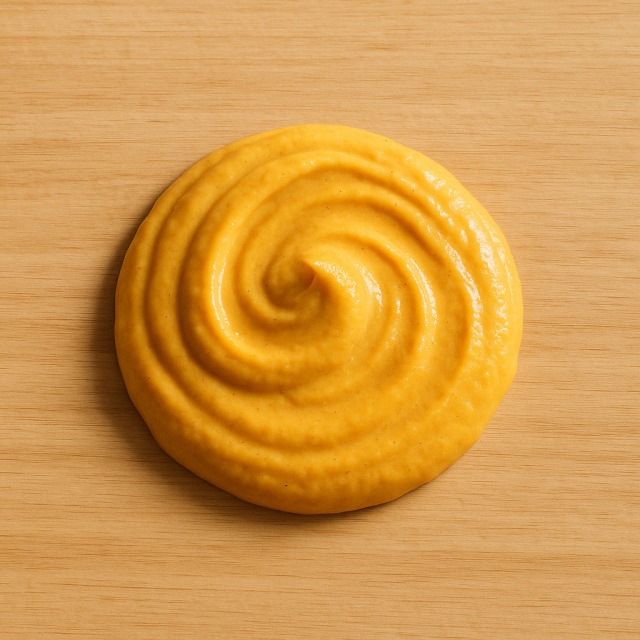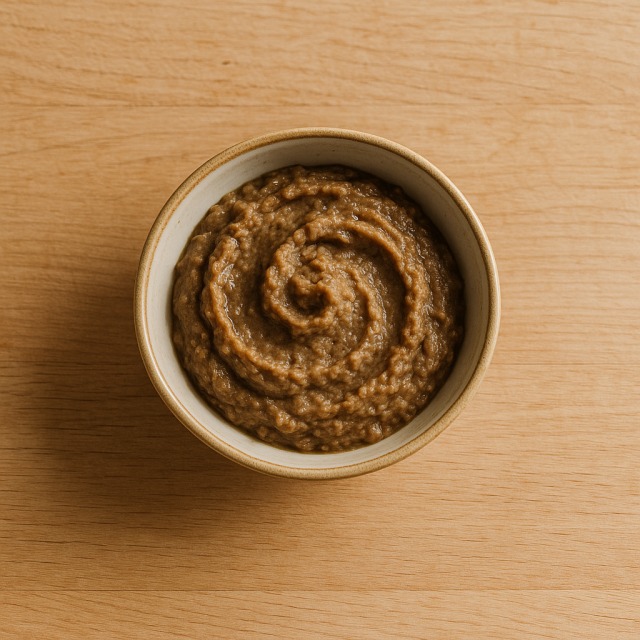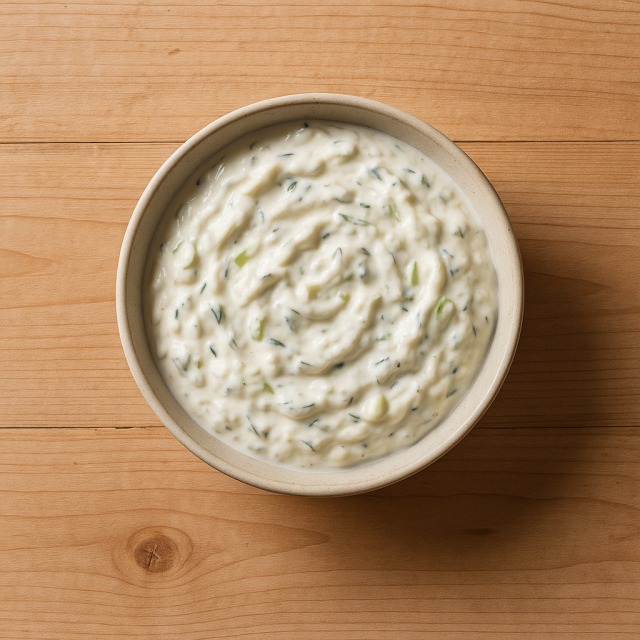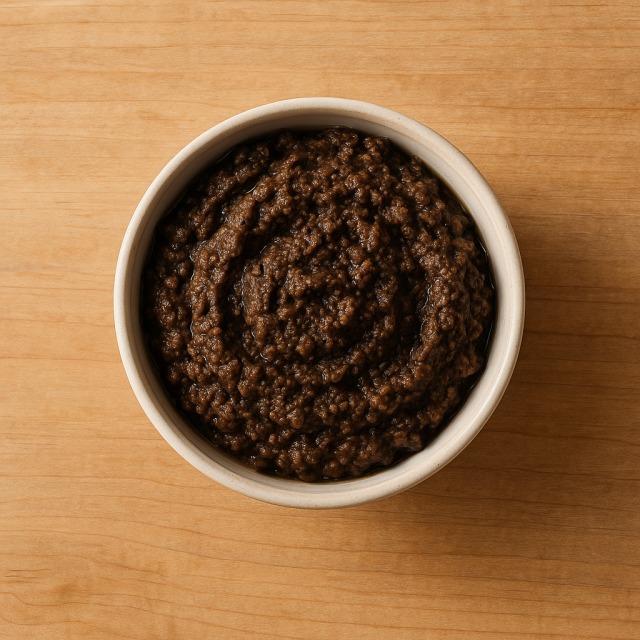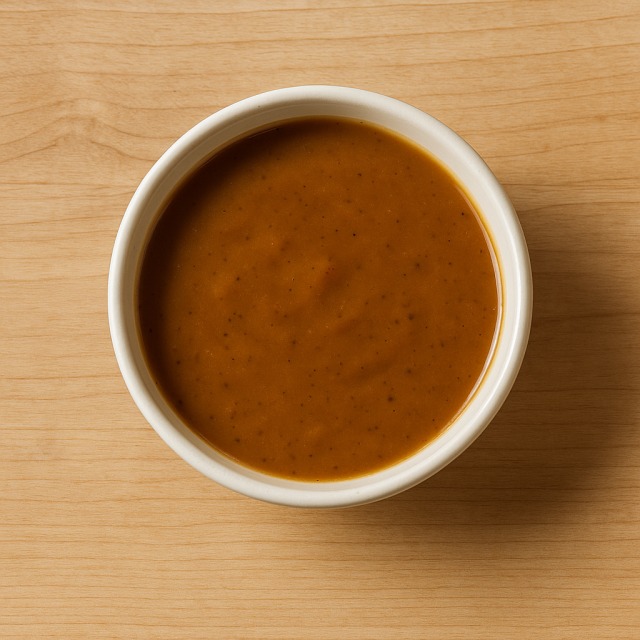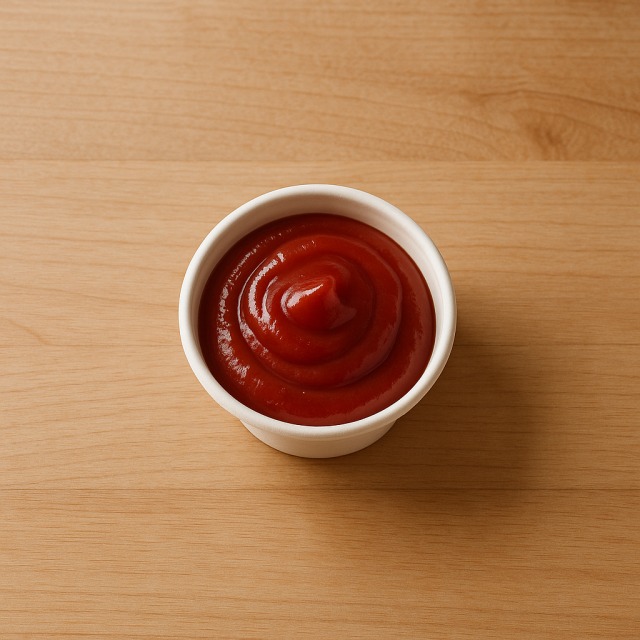Calorie Chart / Seasoning & Sauces / Aïoli
How Many Calories Are in Aioli?
Calculation of the nutritional value & Recommended Dietary Intake of aioli
For g and a calorie requirement of kcal
| Calories 107 kcal | Proteins 0.2 g | Lipids 12 g | Carbohydrates 0.1 g |
| 5% | 0% | 18% | 0% |
Health benefits of aioli
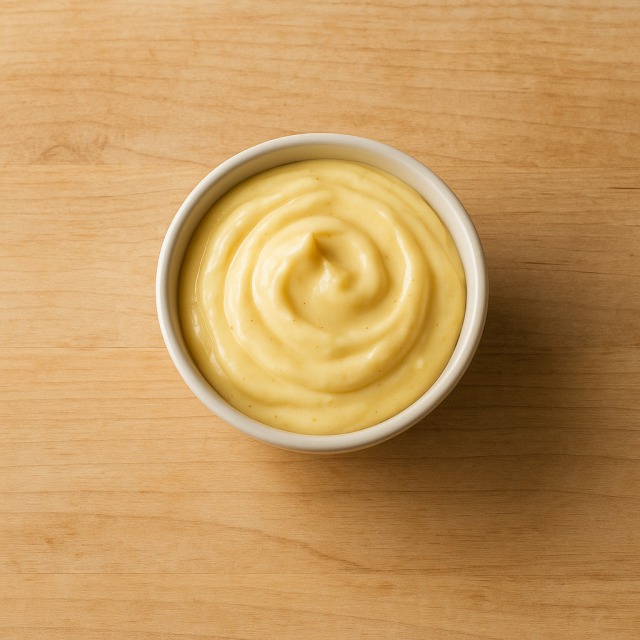
Aioli - 100g
Calories 710 kcal
Proteins 1.3 g
Lipids 78 g
Carbohydrates 0.7 g
Aioli is a traditional Provençal emulsion based on olive oil, garlic, and egg yolk. It is a high-calorie condiment (710 kcal/100 g), so the calorie classification is definitely "high-calorie." Still, those calories largely come from monounsaturated fatty acids provided by olive oil, which are known to help maintain normal blood cholesterol levels. The same calories therefore deliver heart-friendly oleic acid plus vitamin E (an antioxidant that helps protect cells from oxidative stress) and vitamin K.
Garlic contributes organosulfur compounds such as allicin, reputed to support cardiovascular health and exhibit mild antibacterial properties. The yolk brings additional nutrients: vitamin A for vision, vitamin D for immunity, vitamin B12, and choline for normal nervous function. Although its calories are high, aioli is virtually devoid of trans fats and contains only trace carbohydrates, making those calories more compatible with low-carb or ketogenic dietary patterns. Historically, fishermen of Provence served aioli with boiled fish and vegetables during winter, using its dense calories to sustain long working days.
Compared with other sauces like mayonnaise or Hollandaise sauce, aioli offers similar calories but a more pronounced garlic profile and a cleaner ingredient list (no butter). Remember that its calories add up quickly because 78 g of lipids are packed into every 100 g, so a single tablespoon (about 15 g) already delivers roughly 106 calories.
Tips for incorporating aioli into a balanced diet
Because aioli is concentrated in calories, portion control is key: one tablespoon supplies about 100 calories, enough to flavor a plate without overloading calories. For a balanced Mediterranean-style meal, pair a small dollop with steamed cod, boiled potatoes, and blanched green beans. The lean protein and fiber help offset the sauce's calories.
Another idea is the classic "aioli garni": serve hard-boiled egg halves, seasonal boiled vegetables, and poached crab or shrimp and prawn around a central bowl of aioli. You control calories by loading the plate with vegetables while limiting the sauce to two spoonfuls (≈200 calories).
If you love tapas, spread a thin layer of aioli on toasted baguette slices, then top with roasted bell pepper strips. One slice will contribute roughly 70 calories from bread plus 30–40 calories from the smear of sauce, keeping total calories in check.
For lighter everyday cooking, whisk one teaspoon of aioli into a cup of vegetable soup just before serving; you gain flavor for only about 30 extra calories. You can also dilute aioli with plain yogurt to make a lower-calorie dipping sauce whose calories are closer to that of tzatziki.
Frequently Asked Questions
- How many calories are in aioli?
- There are 710 kcal per 100 g.
- Is aioli considered fattening because of its calories?
- Yes, aioli is calorie-dense at 710 kcal/100 g. However, if you limit your serving to one tablespoon (≈15 g, about 106 calories) and balance the rest of the plate with lean protein and vegetables, those calories need not derail your diet.
- Which macronutrient provides most of the calories in aioli?
- About 78 g of lipids per 100 g supply roughly 95% of the calories, while proteins and carbohydrates contribute only a few calories.
- Can I include aioli in a low-carb diet without exceeding daily calories?
- Aioli fits low-carb plans because it has just 0.7 g of carbs per 100 g; keep an eye on portion size so that calories remain within your goal.
- Is homemade aioli lower in calories than store-bought?
- Calories are similar because both rely on oil for texture; variations in oil quantity can shift calories slightly, but expect 650–750 kcal/100 g.
- How do aioli calories compare with those of guacamole?
- Guacamole averages around 180 kcal/100 g, far fewer calories than aioli's 710 kcal/100 g, mainly because avocado contains more water and fiber and less oil than aioli.
Similar foods
Information provided by Calorie Menu may contain inaccuracies or errors. It cannot, under any circumstances, substitute medical advice or medication.
